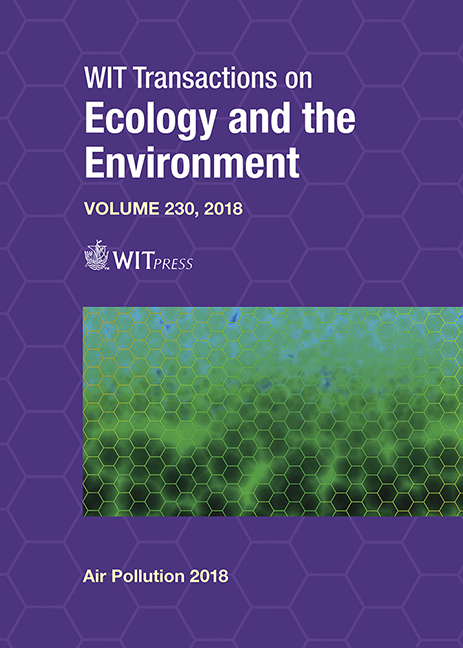BIOAEROSOLS EXPOSURE ASSESSMENT IN MOLD-DAMAGED HOUSES IN NORMANDY, FRANCE
Price
Free (open access)
Transaction
Volume
230
Pages
8
Page Range
313 - 320
Published
2018
Paper DOI
10.2495/AIR180291
Copyright
WIT Press
Author(s)
ANTOINE DELANOE, VIRGINIE SEGUIN, VERONIQUE ANDRE, STEPHANIE GENTE, PHILIPPE VERITE, EDWIGE VOTIER, ESTELLE RICHARD, VALERIE BOUCHART, MARGOT DELFOUR, NATACHA HEUTTE, DAVID GARON
Abstract
The deterioration of houses and indoor air quality caused by moisture and molds is a major health and economic concern in many countries. In 2009, the World Health Organization published a report that highlighted moisture problems in 10 to 50% of European homes. Damp indoor conditions lead to growth of microorganisms which can be released into the air. Airborne molds represent a significant part of these bioaerosols and are able to produce mycotoxins that may cause various adverse effects such as cytotoxicity or genotoxicity. This study follows 3 objectives: 1) characterization of airborne molds and selection of relevant microbiological indicators for monitoring air quality; 2) study of the toxicity of bioaerosols and molds collected from bioaerosols; 3) determination of the effects of climatic factors on fungal growth and mycotoxins production. Bioaerosols were collected in mold-damaged homes selected by local partners and then analyzed for their microbial composition (quantification of molds, endotoxins and glucans) and their toxicological properties (cytotoxicity on lung and skin cells). A questionnaire for assessing the health impact and the habits of residents was also systematically completed. Airborne mold concentrations ranged from 16.7 to 361,000 cfu/m3 and showed a fungal diversity ranging from 4 to 20 species per home. Aspergillus versicolor and Penicillium chrysogenum were the most recurrent species in bioaerosols. Fungal isolates belonging to the Aspergillus genus were tested in vitro for their ability to produce mycotoxins. Among them, sterigmatocystin and gliotoxin were found in A. versicolor and A. fumigatus cultures, respectively. The toxicological approach showed that some bioaerosols induce cytotoxic effects. This study was supported by the Conseil Régional de Normandie, the Agence Régionale de Santé de Normandie (ARS) and the Agence de l’Environnement et de la Maîtrise de l’Energie (ADEME).
Keywords
bioaerosols, cytotoxicity, endotoxins, glucans, indoor air, molds, mycotoxins





